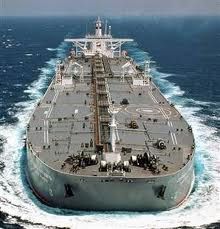
With international pressure mounting on India to reduce its dependency on Iranian crude, the developing nation has to look further afield to source this valuable feedstock for its expanding refinery capacity.
In its latest weekly report, Gibson mentioned that "India’s geographical location makes Iran the perfect source for the quantities of crude now demanded in the region. India is currently the fourth-largest oil importer in the world, with about 80% of its crude requirement needing tanker transportation. State run oil companies have identified the US, Canada, Australia and West Africa as potential areas, not just to source crude, but also opportunities for investment. India is following as similar path taken by China to own or control the source of its supplies oaf raw materials to feed economic growth. India has cash to invent in partnerships with other nations" said the London-based shipbroker.
It added that "last month an Indian co consortium, led by the Oil & Natural Gas Corp. announced plans to invest $2.2 billion in the Venezuelan Cara Bubo oil field project, with another $500 million in the Sana CristobAl oil field. India and Venezuela have also agreed to boost ties baby jointly building refineries in tithe two countries, as well as boost exports from the South American country. Venezuela has also been invited to partner the Indian Oil Corp. in a planned refinery to be built in the Bay of Bengal.
India's economy may be showing signs oaf a slowdown, but the latest forecast by the IMF still
indicates a 6.5% growth for next year. Whilst India’s crude imports show some monthly volatile it, the general trend is upwards. Thus the lights won’t go out on India's demand for crude oil and
this is likely too be sourced from further afield and with it prospects for increased ton miles for the tanker fleet" Gibson concluded.
It had been inspired in its analysis by the fact that during the past week, "India witnessed a massive power black outs which affected 620 million people and shows how fragile India’s developing economy is, whilst dependent upon an ageing power grid. It is estimated that only about 2% of India’s power generation comes from oil. However, power is increasingly becoming a serious issue which the government must address quickly, not only to support a growing economy but also a growing population. There is also massive urbanisation , which is again putting increasing pressure on energy and the environment. There are similarities with the rapid rise in the Chinese economy when demand for energy outpaced supply. Urbanization a nod growth in the eke anomy, coupled with demand for material wealth in terms of cars and white goods will continue to drive forward Indian oil demand" Gibson noted.
Meanwhile, in the tanker markets this week, in the Middle East, "higher VLCC volumes perhaps, but never enough to tighten availability, and owners end the week in no better shape than they did last week. Rates even squeezed down a little fur there to around nod WS 22 West and WS 32.5 East, and look set to continue similarly awful over the coming period, unless charterers get totally carried away. Suezmaxes operated to a steady beat, but that also wasn't enough to allow for any rate inflation. Rates remained in the low WS 40’s West and low/mid WS 70’s to the East with more of the same predicted. Aframaxes received a little more attention than of late, and Owners managed to gain a small foothold at WS 92.5 to Singapore, with some further limited potential over the near term" Gibson said.
In West Africa, "nasty got nastier for Suezmaxes. Charterers kept en inquiry upon a drip feed, and the weight of tonnage forced rates down to a new low of WS 55 for US Gulf and little better than WS 57.5 for Europe. Bottom has now effectively been touched, and Charterers may move more concertedly next week to take advantage of the 'sales' -while stocks last and Owners will hope that enough momentum will then be created to allow for some redress, but it may just prove to be hope. VLCCc's stayed quite thin upon the fixing window for inter-Atlantic movements, but there were few takers at the theoretical 260,000 by WS 40 for US Gulf, and most of thee action seen was to the East on forward dates where ballasters from the region kept rates soggy at down to WS 35.75 for China and under US$ 3 million for West Coast India" the shipbroker said.
Finally, in the Mediterranean, "the needle stays stuck on the Aframax record, and it’s not a jolly tune for owners. Too many ships --again - and not enough cargoes - again. Rates remain concreted into an 80,000 by WS 80/82.5 range cross Med as a result, and no good reason to flag up a near-term change. Suezmaxes started to kick their heels as fresh business s all but dried up, and rates from the Black Sea slid to 140,0000 by WS 62.5 for European destinations with little better than WS 50 payable for transatlantic discharge" Gibson concluded.
Nikos Roussanoglou, Hellenic Shipping News Worldwide
We use cookies to improve your experience. By continuing to use our site, you accept our Cookies, Privacy Policy,Terms and Conditions. Close X